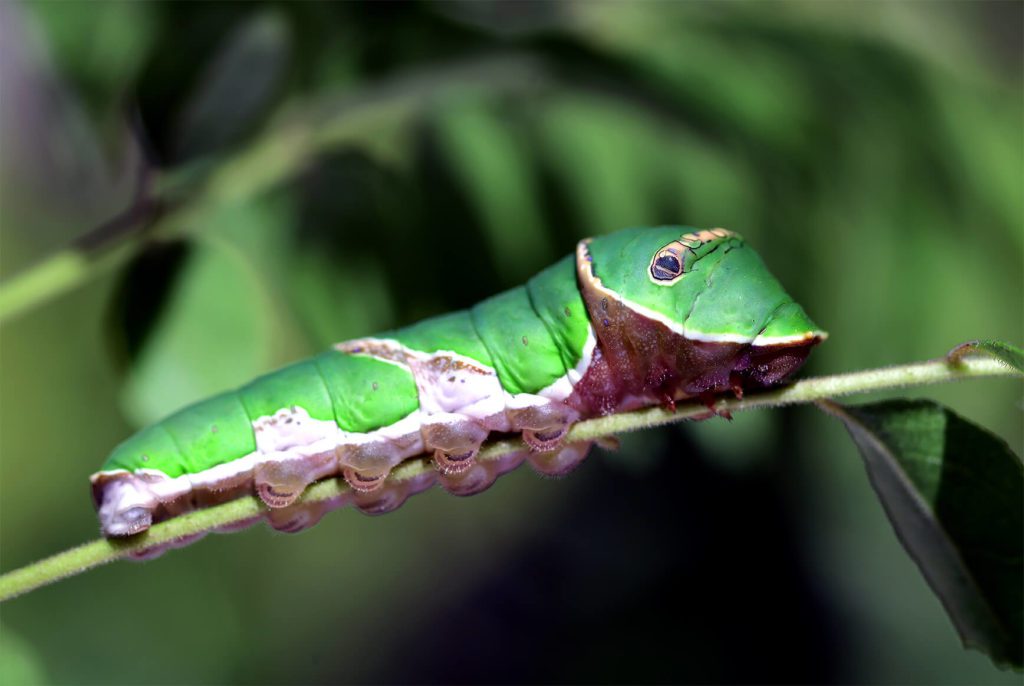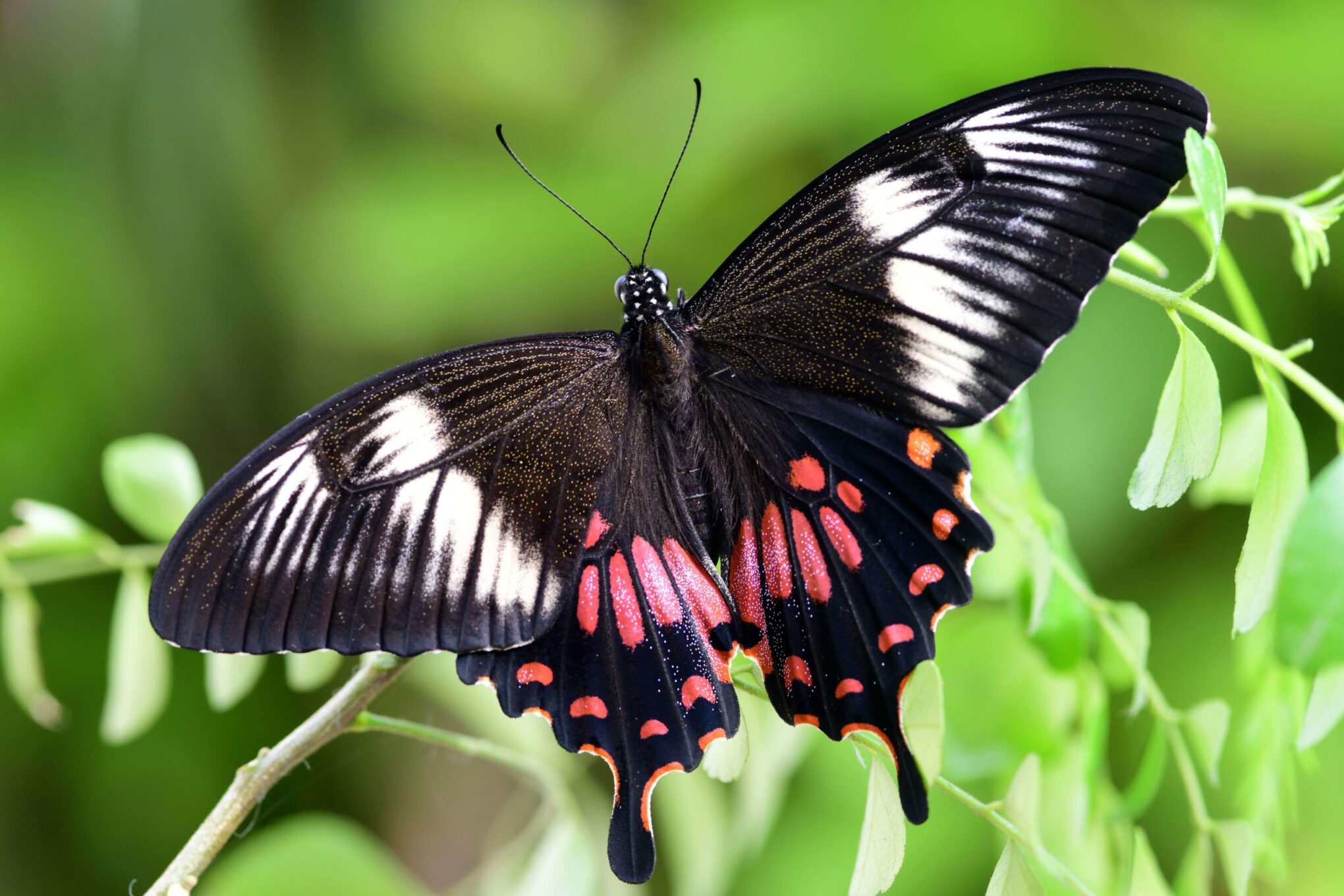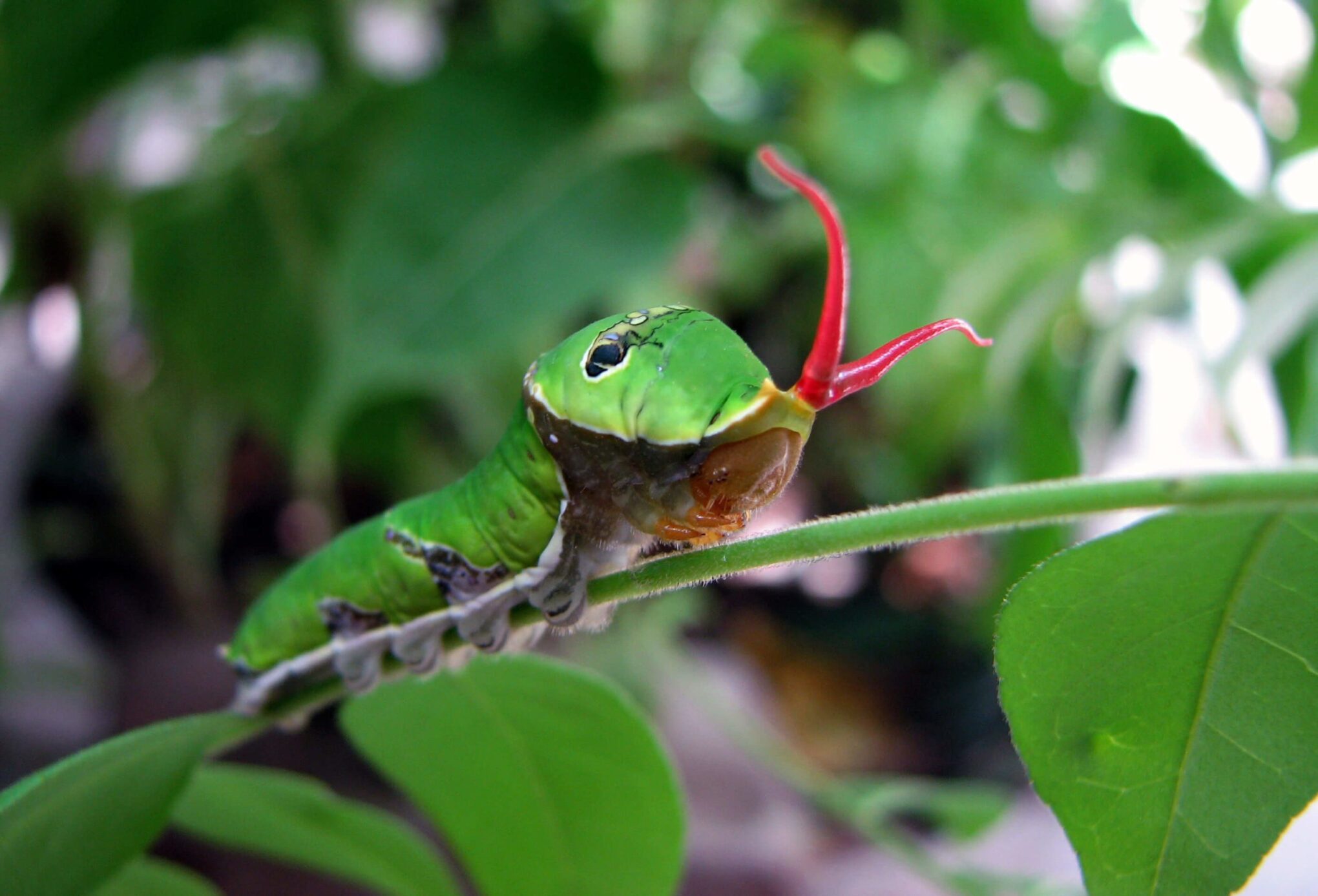Reading Time: 8 minutes
Dr. Swaraj, an expert on butterflies, reveals a story of patience and hope, of how a caterpillar transformed into a beautiful Common Mormon butterfly. An exclusive for Different Truths.

Denys Watkins-Pitchford, a British naturalist once wrote, “All one’s butterfly memories are sunny ones, bright pictures in the mind which colour the dark days of winter.” Out of all our butterfly memories worth cherishing, there is one that really stands out. More so because it pertains to the period when the Covid-19 had chilled our souls.
March 2020 was ushered in by intimations of the Covid-19 pandemic. We locked ourselves in to lock out the virus. But in hiding from death we became fugitives from life itself. The media inundated us with the news of disease and death. And we were left with interminable time to dwell on both, death and disease.
Death and fear stalked empty streets, roads, and parks. Fear deadens hope and breeds contempt. The fear of death manifested itself in contempt for the virus, and the virus-infected body. We even forgot to treat the dying and dead with dignity.
Yearning for Hope
But life is not just being caught in the present. It is yearning, hope and dreaming. We cannot live without hope. As it is, humankind, as Eliot says in Burnt Norton, “cannot bear very much reality.” Overcome by a sense of all-pervading dysphoria, we yearned for signs of hope. Hope could come in any form, any sign wondrous enough to affirm life. We longed for small, epiphanic moments to kindle hope amidst devastation and gloom.
The occasion was provided by an extremely self-willed caterpillar of the Common Mormon butterfly…
Our moment of epiphany came in the month of May. The occasion was provided by an extremely self-willed caterpillar of the Common Mormon butterfly (Papilio polytes). The Common Mormon belongs to Papilionidae, a subfamily of swallowtail butterflies. Papilionidae itself is a part of the larger family Nymphalidae.
The Common Mormon is a beautiful big butterfly, velvety black with white and red spots. Its flight is swift and energetic. It is known to lay eggs on the leaves of curry and citrus plants. When the eggs hatch, the first food of the larvae is the eggshell. Then they go on to consume the freshest and tenderest leaves. Butterfly caterpillars are known to have gargantuan appetites.
Defoliated Plant
One May evening, I found that our potted curry plant was getting defoliated. I had a hunch that it could be the doing of a Common Mormon larva. I tried looking for one but could not sight any in the dim, evening twilight. The next morning, I found a caterpillar feeding on the curry leaves. A greenish worm, it was munching leaf after leaf. It was the fourth instar. After hatching, the Com larva passes through five stages, each stage is known as instar.
Bulbuls, Mynahs, Tailor Birds and babblers, all relish caterpillars.
The charmed life it had led till then was worth marvelling at. Bulbuls, Mynahs, Tailor Birds and babblers, all relish caterpillars. All these birds are regular visitors to our home. They feed the caterpillars to their nestlings also. No butterfly caterpillar had even a dog’s chance with so many enemies around. How the Common Mormon caterpillar had survived till then, was no less than a miracle. Having found it, the thought uppermost on my mind was how to save it from its predators. It had to be saved and could not be left out. Most butterfly caterpillars are totally harmless creatures. Without having any organs of defence, they are easy prey to their predators.
The only way to save it was to take the pot inside. Or to put it at a place where the predators had no access to it. I chose the latter alternative. Taking it into the bedroom posed some hazards. I feared that any show of affection for the green monster could turn my wife’s eyes green. The caterpillar was yet to turn into a titli – a butterfly. Ignoring the one at home who presided over my life, for a butterfly yet-to-be! How could I even think of taking such risks?
Mother of Jugaad
Necessity being the mother of jugaad, an old fly-proof wooden cabinet was recovered from the store. Its warped mesh door was fixed and made workable. The pot was placed inside it. The contraption was successful in protecting the glutton busy devouring leaf after leaf. It seemed to have no worries in life other than consuming leaves. After two days, the fourth instar gave way to the fifth, a veritable green monster.
I wanted to photograph all stages it would undergo till it metamorphosed into a butterfly.
It did not like to be disturbed at all. I wanted to photograph all stages it would undergo till it metamorphosed into a butterfly. For taking pictures the pot had to be taken out of the cabinet. Whenever I did that the rogue was all fury. It reacted as if its private space was being violated. It threatened me with the bold show of its two red, horn-like fleshy protuberances known as osmeterium.

The osmeterium gives off a very pungent odour. I endured the stink assault manfully. In fact, it revealed that my olfaction was intact. To tell you the truth, I did provoke the monster once or twice to evert the stink organs. Unaltered olfaction was a foolproof test of being Covid negative. It was any day better than undergoing the RT-PCR for detecting Covid infection. As it is, the whole idea of negativity and positivity had been upturned. One just hoped to be negative, nothing but very positively negative.
Time to Pupate
On the fifth day, the caterpillar stopped gorging on the leaves. The time for it to pupate had arrived. I knew that the time of my trial by fire had also arrived. I had had a few encounters in the past with the Common Mormon caterpillars. Before pupation, they start wandering here and there looking for a secure place to pupate. I needed to knuckle down to keep track of the wandering worm. This requires the patience of a saint.
There was negligible chance of the caterpillar pupating on the weak branches of the curry plant.
There was negligible chance of the caterpillar pupating on the weak branches of the curry plant. I knew that it would start marching in the night to pupate somewhere on the cabinet wall. I wanted it to pupate on a branch rather than in a corner of the cabinet. I plucked about two feet long, thin but sturdy lime branch for this purpose. This was necessary to make good photographs at the time of eclosion of the adult butterfly. And I had to stay awake till the caterpillar did not rest and pupate.
What a piece of work that caterpillar proved to be! My wild caterpillar chase began at the midnight hour when it started marching. It snaked down the curry plant to the pot. That is when I induced it on to the lime twig. Slowly, but surely, rippling its way ahead, it reached the farthest end of the twig. Finding the end of the road, it turned back. All this while I held the twig like a hot ladle, shifting it from one hand to the other. It marched to and fro on the twig for about three hours.
Unquenchable Wanderlust
Some spirit with unquenchable wanderlust seemed to have entered it. It had assumed a distinct personality of its own. Well, the time was such: “The time when screech-owls cry, and ban-dogs howl / And spirits walk, and ghosts break up their graves” (Shakespeare. Henry VI).
It was a test of two wills, that of the Learesque caterpillar and mine.
It was a test of two wills, that of the Learesque caterpillar and mine. I wanted it to pupate as early as possible, but it was not willing. While marching, it would lean sideways and hang perilously clasping the twig with its hind legs.
Finally, around 3 O’clock in the morning, it started looking for a secure place to pupate. It stopped pacing to and fro and started moving its head round and round. Obviously, it was secreting silk for the girdle to hang on to.
With Lady Macbeth’s words on my lips, I prayed: “Screw your courage to the sticking place.” And finally it did stop! Motionless it hung upside down on the twig. At a place it had chosen itself to pupate. This is what I presumed, and I felt relieved. Pleased with my tenacity I stuck the twig into the soil in the pot. But I was blithely unaware of what lay in store for me the next morning.
Left the Twig
On waking up I found that the rascal wasn’t there! It had left the twig and moved on. Hoisted by its own petard, it was hanging from the rim of the pot with just one silken thread. It appeared to be an acrobat performing a stunt. In the evening, I found the monster lying on the floor of the cabinet as a pupa. The poor thing had obviously overestimated the strength of the thread from which it was dangling.
I showed it to my wife, who smiled and uttered, “Love’s labour lost!”
I thought there was little hope of it emerging successfully as a butterfly. I showed it to my wife, who smiled and uttered, “Love’s labour lost!” Well, Shakespeare’s entire oeuvre is a veritable mine of metaphors, images, proverbs, and idiomatic expressions. We go on using them without fathoming the depths of their meanings. Nor do we ever pay much attention to the heights they spur our imagination to. On umpteen occasions Shakespeare’s metaphors and images touch the heart and speak the soul. They clarify certain situations in a manner nothing else does.
The “love’s labour lost” jibe made me understand two things. One, that one may smile and smile and still be, well, what everybody knows. The other was the true import of “love’s labour lost.” How very painful it is to see one’s labour of love gone to waste!

Peter’s Advice
Not knowing what to do, I rang up Peter Smetacek. Peter is an internationally renowned butterfly expert. He has a Butterfly Research Centre in Bhimtal. He advised me not to lose hope. As suggested by him, I put the brownish chrysalis in a petri dish. The dish itself was placed in an old-fashioned niche in our bedroom. I just watched the chrysalis twice every day with mixed feelings of hope and despair.
In a moment of wondrous apotheosis, the pupal case broke open.
On the ninth evening, the chrysalis started becoming transparent. New life was pulsating inside it. Hope stirred afresh. We applied some glue to the cremaster (the hooked, rear part of the pupa) and attached the chrysalis to a twig. Early next morning the miracle happened. In a moment of wondrous apotheosis, the pupal case broke open.
A wet, shrivelled butterfly wriggled out. In an hour it expanded its wings and hung in all its glory before us. My wife’s face was radiant with her beatific smile. She patted me on the back. It was as if we had reaped the sweet fruit of our love’s labour. It was a moment with a Miltonic twist. Milton first wrote Paradise Lost and then Paradise Regained. For us it was love’s lost labour that was finally regained.
Beautiful Mormon
In a few hours, the beautiful Mormon flew to freedom, taking our breath away. This birth against all odds revealed both the precariousness and preciousness of life, and the need to hold on to hope. The caterpillar proved not only a survivor, it became what it dreamed of becoming. “Be that thou hop’st to be, or what thou art,” is what Shakespeare wrote in Henry VI. The determined caterpillar living its dream bore a testimony to the value of holding on to hope.
Photos by the author

















Wah…. Excellent. The journey of hope against despair and ultimately hope wins to become God’s own flower on wings, fluttering to spread the joy and happiness of its very being. The author has not only witnessed each and every stage of the journey beautifully presented in words but also became a savior.
Congratulations!
Sir, these words coming from you are worth their weight in gold for me. Thanks a lot, Sir.